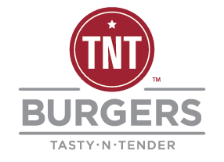Source grind and flavor aren’t the only factors that differentiate one patty from the next. Other factors, such as scoring, shape and size are important considerations when choosing a patty, as they affect cook time and presentation. Here’s what you should know so you can make informed decisions.
Scoring
Scoring, or perforating one or both sides of the patty immediately prior to freezing, allows for faster, more even cooking and can boost aesthetic appeal and texture. Scoring also helps prevent cooking defects, giving you more servable patties and less waste.
Knife perforation produces more narrow score marks, and helps reduce delamination caused by fat or grease being trapped on the inside of the patty
Waffle perforation, which produces a wider, more square pattern on the patty, provides a more uniform shape and cooks more consistently
Rolled perforation creates a patty with a hand-formed appearance; no two patties are alike, which lends a higher quality aesthetic to your burger offerings
Shape
Using mold plates or rollers, patties can be formed into a variety of shapes, including round, oval, square and homestyle. While round patties are the most common, homestyle or natural shapes are growing in popularity as they imply “premium” and “freshly made,” which can help operators command a higher menu price.
The ideal patty shape and “reach” for your particular application will depend on the other ingredients in your burger concept. For example, if you’re using a larger square ciabatta bun for a specialty burger, a wider patty such as our Maverick® patty will work best for optimal bun coverage. For a more premium concept that features locally sourced toppings, a homestyle patty – such as our Cedar Canyon® options – offers the hand-crafted appearance that appeals to quality-seeking customers.
Size
“Bigger is better” seems to be the top trend in terms of patty size, but it’s not necessarily the best buying approach. Whether you build your burger concept bun-first or patty-first, the size of your patty should be equal to the size of your bun. If the bun is too big, it can overpower the patty and your customer will get a mouthful of bread. If your patty is too big, the meat and toppings can overwhelm the bun, leaving a soggy mess in its wake. So, regardless of the patty size you choose, balance is key.




